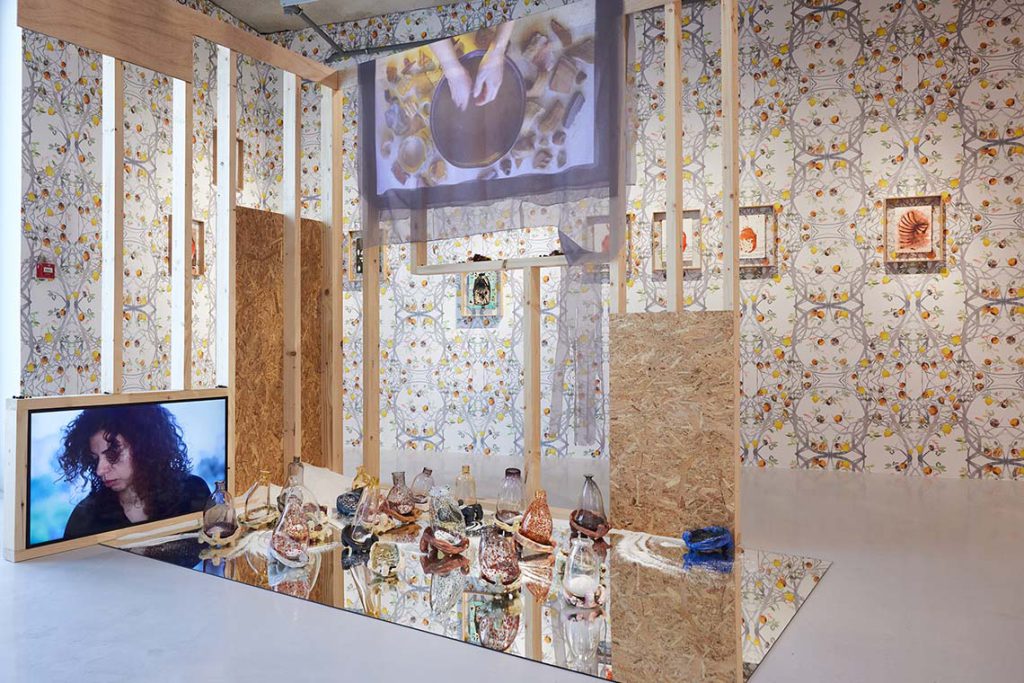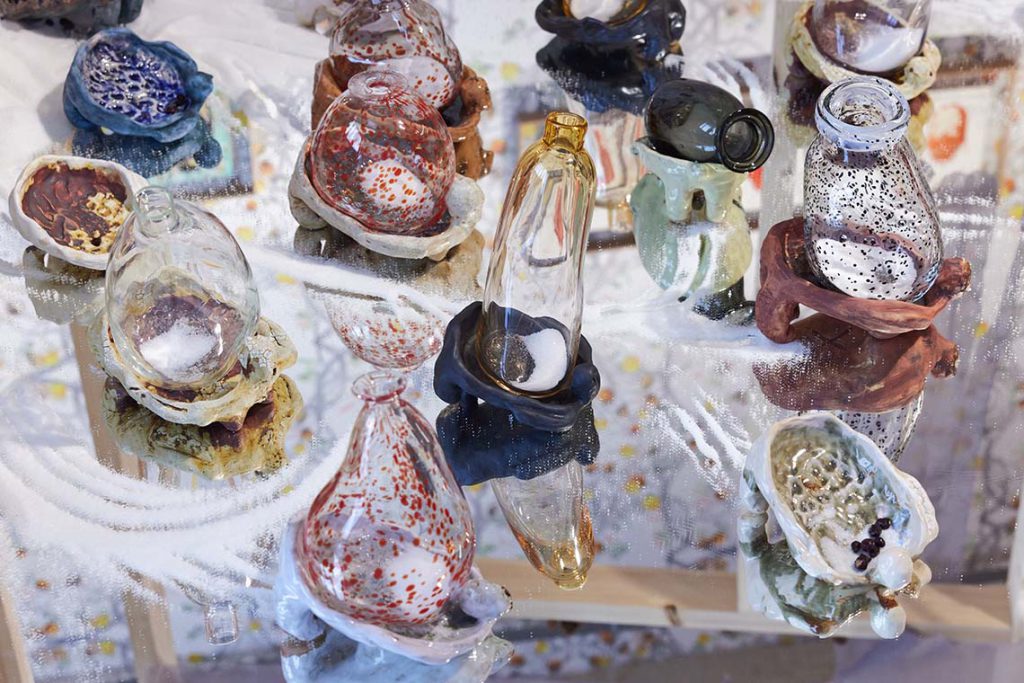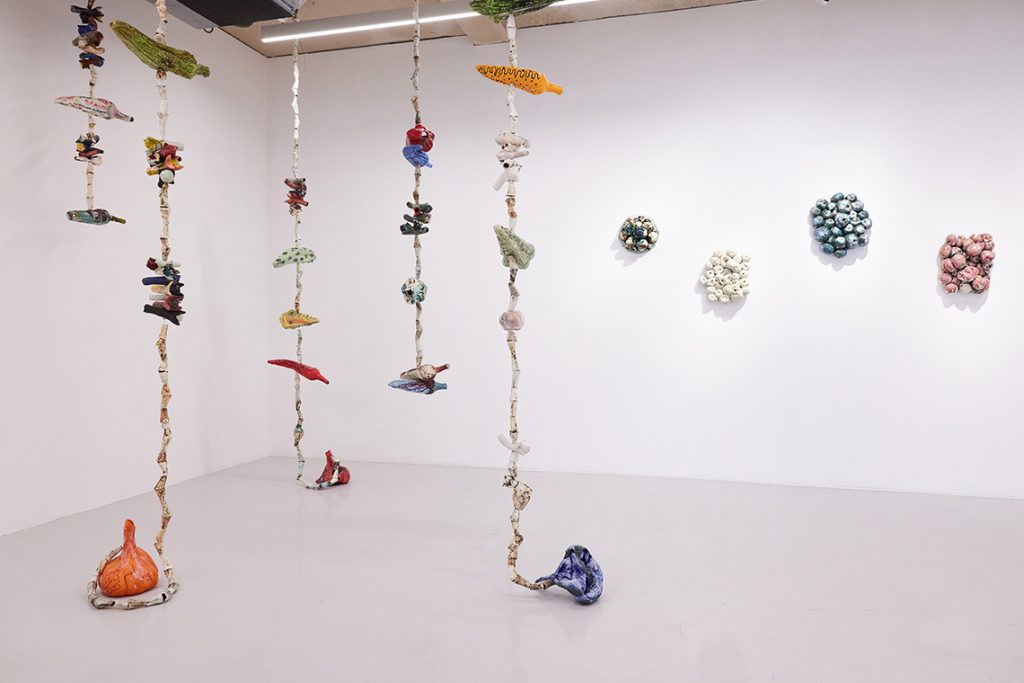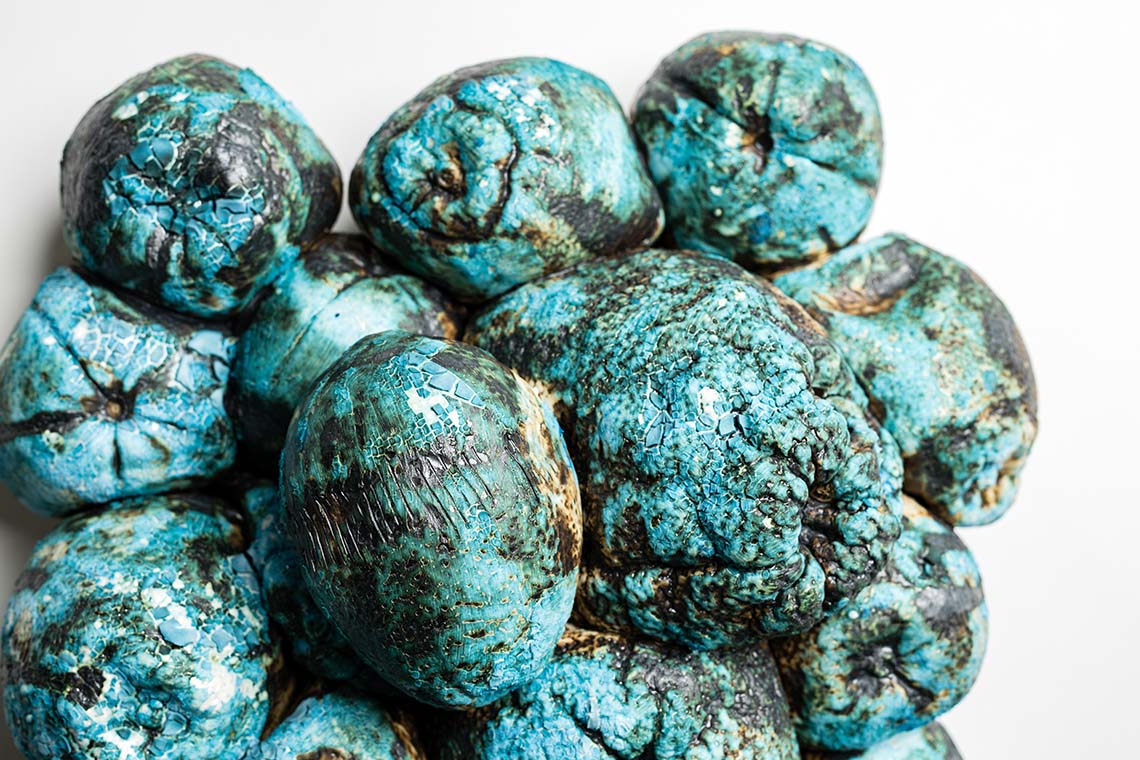The inaugural exhibition at NIKA Project Space Paris sees Mirna Bamieh spotlighting Palestinian food fermentation as a symbol of resistance and empowerment.
Dubai’s NIKA Project Space opened its new Paris gallery in the vibrant Komunuma art quarter this September, with an inaugural show by Palestinian artist Mirna Bamieh exploring memory, loss and politics through the lens of culinary heritage. Known for her emotionally charged work tackling important social issues, Bamieh is the founder of the Palestine Hosting Society, a live art project and platform that she established in 2018 to preserve Palestinian recipes in danger of disappearing.
The show at NIKA is entitled Sour Things, and is the latest body of work in Bamieh’s ongoing series of the same name. In 2023, she started Sour Things at the Sharjah Biennial, taking over the old vegetable market with The Souq and later staging The Kitchen at NIKA Project Space Dubai that same year. The series focuses on stories, told through systems of food and consumption, which reflect changes in a body or society.

Bamieh’s latest exhibition features the new installations The Pantry, The Staircase and The Wall, making up a multimedia exhibition using fermentation – a traditional way of preserving vegetable and food in Palestine – as a way to reflect on displacement and loss, especially in light of the recent tragedies unfolding in Gaza and the West Bank. “I started working on The Pantry when the war on Gaza started, so this whole piece came out of an urgency for me to ask what does the pantry of the displaced and the uprooted look like?” Bamieh tells Canvas. “What does a pantry look like when there’s no roof above it? How do we practice preservation for a future moment, when time for fermentation and filling jars is possible again?
The Pantry is composed of several elements, arranged in and around a structure that is between semi-built or semi-demolished. “It’s a multimedia installation that is a liminal space, a place and no place at the same time,” Bamieh explains. “I’ve tried to make this series convey what I’ve been feeling, not simply as a Palestinian but also as a witness to what’s happening. I was in Palestine when the war started and one month into the war, I had to leave, not knowing when I’ll be back.”
A back wall is covered in a pretty, colourful wallpaper with the pattern of lemons, but on closer inspection the citrus is decayed. On the floor, over 30 hand-blown glass jars of varying sizes and shapes are arranged, all filled with salt in preparation for future fermentation. The salt is doubly a symbol – one of hope, for times when fermentation might again be possible, but also one of sorrow. “To preserve food is to have control over time,” says Bamieh. “It is to have a future moment when it’s safe, when you arrive and you are able to fill a jar and see the process through to the end.” She goes on to explain how to start fermentation in a jar means that you have a jar, you have a house, you have a space and a time when you can check on this jar for at least a month. “We don’t think about this, but when you are uprooted, and when you are displaced, you don’t have any of this. You cannot preserve, you cannot ferment. So that’s why there’s only salt as a living element in this installation.”

Two video works accompany the jars, showing Bamieh washing fragments of antique pottery in one work, and laying those same fragments on a prone body in the other. It’s intentionally unclear whether the act is a form of funerary ritual, or if the person is alive. The installation also features 22 drawings called Sour Jars created with watercolours, ink and brine. Bamieh says it’s been 20 years since she last created drawings, but she felt a cathartic need to return to her early medium now. The pieces all include a fermentation jar of some kind, as well as fragmented versions of a sentence posted by a 13-year-old Palestinian girl on social media during the war, which translates to “Would I be free if I were an object?”
“It’s a very intense thing to have a 13-year-old think the only way to attain freedom to breathe is by becoming an object,” Bamieh says. “For me, that just abstracted so much trauma and, although it’s simple, the aspiration was so intense, and I needed those 22 drawings just to understand it. She has taken that sentence, constructed, deconstructed and repeated it, sometimes rendering it illegible, and also combining it with the image of a jar, which she describes as “the object of freedom for me”.
Outside of The Pantry, a series of semi-glazed ceramic sculptures of oranges in different stages of decay, entitled Grieving in Colours, makes up The Wall. The series draws parallels with Palestinian writer Ghassan Kanafani’s 1962 short story The Land of Sad Oranges, which describes the expulsion of a Palestinian family from Jaffa in 1948. Bamieh’s own paternal family hails from Jaffa, and the orange sculptures explore the many stages of grief visually, using the symbolic fruit to represent her own feelings on the war, especially as she is now in exile.

Another corner is dedicated to The Staircase, composed of large ceramic sculptures of okra, garlic, chili and clove spice, hung from the ceiling in the same way these foods would be hung to dry in the sun for future use. These Sour Cords – strung with foods known for their medicinal properties – are each glazed in childlike drawings expressing trauma and pain. The pieces are intended as an act of self-healing.
Bamieh intends to continue with the project, creating new installations to represent different parts of a complete apartment, such as The Washroom and The Bedroom to come, also in some way connected to Palestinian food traditions. “Food as a medium is so rich and so disregarded in its value and importance,” she says. “It’s a narrative that can tell us parts of history and politics, parts of who we are, in a way that other stories cannot.” She sees food as an element of resistance so easily overshadowed by the media and yet symbolic of the day-to-day fight to survive by Palestinians. “You see food stories in intifadas, in moments of hunger, or when there is closures and prohibition of movement,” she points out. “Even now with the genocide on Gaza, you see how people are conveying their lives through the food that they’re cooking. They’re trying to create something out of nothing, and it’s this empowerment that I try to showcase in my work.”



